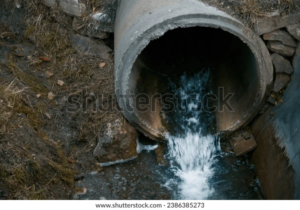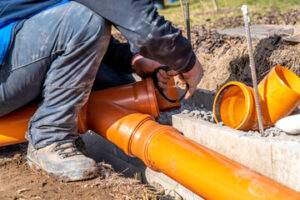Drywall is the construction material used to create walls and ceilings. It’s not indestructible, and drywall can be damaged by many things, including kids playing with nails and vacuum cleaners.
Fortunately, minor damage, such as nail pops and small holes, is relatively easy to repair. In this video, Silva demonstrates how to fix these imperfections quickly. Contact Drywall Repair Mesa AZ now!

When your wall has holes or stress cracks that are small enough to patch, a drywall patch kit can be an easy way to repair the damage and get the surface ready for paint. These kits usually contain all the tools needed for a successful patch job, including the patch, spackle and joint compound. Most drywall patch kits are also designed to make the task as easy as possible for DIYers, and they often include simple instructions and tips on how to do the job.
The simplest and most economical option is to use a self-adhesive patching material, such as DAP Eclipse. This is ideal for situations where speed of repair is the priority, such as a quick fix in low-visibility areas like closets and painted cabinets. It doesn’t leave the highest quality of repair or least-visible result, but it gets the job done quickly and efficiently.
Another option is to choose a spackling, such as DAP Alex Plus Fast Dry Premium Spackling, which can be used to fill holes and cracks in drywall. It provides pro-grade strength and dries in 15 minutes, making it ideal for quick repairs that can be painted in the same day. It’s important to remember that if you choose a spackling, that you will need to smooth it afterward to create a clean finish.
Most drywall patch kits will come with some kind of sanding tool, such as paper or a sanding block, although some will just come with an inexpensive plastic putty knife. These knives aren’t as good as a metal one, but they will do the trick for most patching jobs. You can also find kits that come with a primer, which is recommended for new drywall and can help your finished project look better and last longer.
If you are patching large holes in drywall, it’s generally best to hire a professional for the job. Rather than trying to fix it yourself, you may end up making the problem worse, and it’s best to hire someone to do the work right the first time. This will save you both time and money in the long run.
Spackle
The drywall repair process can be a bit intimidating for some homeowners. But if you’re patient and willing to do some research, spackling is one of the simplest ways to fix small holes and dings in your walls. For large holes, you’ll want to use a patch kit and joint compound.
When using spackle, always follow the manufacturer’s instructions. The most important tip is to let the product dry completely before sanding or painting. If you don’t, the patch may sink into the wall and lose its integrity.
Once the patch is dry, use a putty knife to scrape off any excess compound on the surface of the wall. If there are bare spots on the patch, apply a second layer of spackle, then smooth the patch. When sanding the patch, be sure to feather the edges of the spackle, so it blends with the rest of the wall. Once the sanding is complete, wipe away any dust and apply a coat of primer to help the surface set before you paint.
Spackle and putty both fill in minor holes and imperfections, but there are differences that make each better suited to specific tasks. For example, spackle dries very quickly, making it more useful for repairs in high-moisture areas. However, it becomes rigid once dry and doesn’t flex with expansion or contraction, so it’s not the best choice for taping drywall.
If you have a hole that’s too large for spackle, but too small for a patch kit, you can use a piece of nylon stocking or pantyhose to fill the gap. Cut off a section of the stocking or pantyhose, about an inch or two across. Coat the inside of the section with spackle and press it into the hole. Once it’s dried, sand the area until it’s flush with the wall and paint.
For a more professional finish, you can also cover the entire surface of the wall with a thin coat of spackle, then prime and paint it to match the surrounding wall color. However, if your repair is extensive or the whole room needs repainting, it’s probably a better idea to simply touch up the existing paint instead of replacing the entire wall.
Joint Compound
Joint compound, also known as drywall mud or spackling paste, is a white powder made of gypsum dust and binders. It is used to finish gypsum panel seams and corners, cover tape, and patch holes in new and repaired drywall. It’s available in dry or premixed form and in a variety of types and finishes.
Unlike spackle, which is thicker and can be used for smaller repair projects, joint compound is designed to be applied in multiple coats and then sanded down between each application. It’s a strong and durable material, which is why it’s used in construction jobs. It can withstand a bit of accidental damage and is easy to sand down for a smooth finish.
While both products are great for conducting small repairs, it’s important to know the difference between spackling paste and joint compound to determine which is best for your job. Joint compound is stronger and designed for larger repair projects and new drywall installation. It’s often used in conjunction with aluminum or fiberglass mesh tape to create a more solid surface for painting. It can also be used to patch holes that are too large for spackle, though it may require more work to sand down the area to achieve a smooth finish.
Joint compounds are typically made from a mix of gypsum, limestone, and perlite. The ratio of these ingredients determines how fast the mud dries and how much it resists moisture and mildew. In addition, different brands of drywall compound may contain additives like fillers and water reducers that improve performance.
Dry and Pre-Mixed Joint Compound
Most professionals use dry drywall joint compound, which comes in powder form and requires being mixed with water before use. These types offer a customizable consistency and extended working time, which is ideal for large projects or when specific texture is desired. Pre-mixed drywall joint compound, on the other hand, is ready to use right out of the container and is convenient for smaller jobs. It’s also available in different setting times that allow for the appropriate amount of working time to suit the project at hand.
Paint
For the final touch, paint can help blend the drywall repair with the rest of the wall. The key is to properly prepare the surface before painting. This includes cleaning the area and removing any loose debris. In addition, it is important to use a high-quality primer to create a smooth and even finish. Primer also helps the new paint adhere to the drywall, which can help prevent peeling and fading.
It is recommended to apply at least two coats of primer and a single coat of paint to the repaired area. This will help ensure a smooth and even finish that is virtually undetectable. In some cases, it may be necessary to add more than one coat of paint in order to completely cover the blemish.
If you are planning on repainting the entire wall, it is important to select a color that closely matches the existing texture and sheen of the drywall. It is also important to sand the entire surface before applying the new paint, which will help ensure a seamless blend with the existing surface.
When selecting a paint contractor for your drywall repair and painting project, it is essential to do some research. Look for a company that has a good reputation and extensive experience in the industry. Additionally, be sure to check reviews on consumer websites such as Angie’s List, HomeAdvisor, and Yelp. Finally, be sure to ask the company for references and a detailed quote before making your decision.
Drywall repairs can be tricky, but with the right tools and knowledge, you can achieve a flawless finished result. By following these simple steps, you can eliminate unsightly nail holes and cracks in your walls and enjoy a home that looks brand-new.
Remember to always wear a dust mask while sanding drywall joint compound, as it can be a respiratory irritant that contains fine gypsum and silica particles. Instead, consider using a respirator with dual cartridges that can effectively filter out these particulates and protect your lungs. Additionally, always wear protective eyewear when working with drywall.







